Coastal Dive Site Information for Ventura to Malibu
Here you will find much info about coastal dive sites between Ventura and Malibu. Ken the owner of Channel Islands Dive Adventures has explored much of this area over the years. From all that exploration here he has tried to list many of the dive sites and some information about each. Some are shore dives and others are boat only.
Ventura County to LA County line
Coastal Offshore Reefs
 Diving the coastal offshore reefs is one of the things Channel Islands Dive Adventures likes the most and the fall to early winter is the best time to do it. Some people wonder why dive the coast when the islands have great diving and that is because lots of divers just seem to get stuck in the same old rut and never really venture out to see and do something different. That is the main reason Channel Islands Dive Adventures was started not to mention to give other divers the chance to see things they normally won’t be able to.
Diving the coastal offshore reefs is one of the things Channel Islands Dive Adventures likes the most and the fall to early winter is the best time to do it. Some people wonder why dive the coast when the islands have great diving and that is because lots of divers just seem to get stuck in the same old rut and never really venture out to see and do something different. That is the main reason Channel Islands Dive Adventures was started not to mention to give other divers the chance to see things they normally won’t be able to.
 Also, to be honest, what comes into your mind when someone asks you to dive the coastal offshore reefs? Probably a beach dive from a boat but what you don’t realize is how much you would be wrong with that thought. Sure, it won’t be great all the time but it isn’t great all the time ANYWHERE you go to dive and to see something different you just have to make sure you do a little more planning to ensure a better time on your trip and that is why the CIDA coastal trips are scheduled for November to January. You can dive these same spots in July, August & September but November through January are still the best times with the best results.
Also, to be honest, what comes into your mind when someone asks you to dive the coastal offshore reefs? Probably a beach dive from a boat but what you don’t realize is how much you would be wrong with that thought. Sure, it won’t be great all the time but it isn’t great all the time ANYWHERE you go to dive and to see something different you just have to make sure you do a little more planning to ensure a better time on your trip and that is why the CIDA coastal trips are scheduled for November to January. You can dive these same spots in July, August & September but November through January are still the best times with the best results.
Not to brag but Channel Islands Dive Adventures is the LEADER in doing coastal dive trips. There are some other boats that  occasionally try to do the same thing and either they pick the wrong time of year or just can’t get enough people together to do the trips and to top it off almost all of their GPS coordinates came from CIDA on trips we have done previously with these boats when we chartered them for coastal trips plus CIDA has a special weapon, underwater maps (similar to a topo map) that are made by a friend that you will not find anywhere else. It also helps that we have been diving this area for many years.
occasionally try to do the same thing and either they pick the wrong time of year or just can’t get enough people together to do the trips and to top it off almost all of their GPS coordinates came from CIDA on trips we have done previously with these boats when we chartered them for coastal trips plus CIDA has a special weapon, underwater maps (similar to a topo map) that are made by a friend that you will not find anywhere else. It also helps that we have been diving this area for many years.
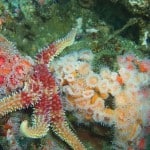 There are a few reasons why many people don’t dive the Ventura & LA County offshore reefs:
There are a few reasons why many people don’t dive the Ventura & LA County offshore reefs:
- Not many know of these areas and how much they to offer, including the dive boats
- All the dive boats leave from Ventura Harbor so it is much further than going to Anacapa/Santa Cruz
- When the seas get rough it is a harder trip back for everyone then a trip to Anacapa/Santa Cruz
- It seems there are many divers that just don’t want to try something new
- The main dive sites are too far to dive from the beach and sometimes hard to get kayaks to
Next time you’re looking for a different type of dive trip come join Channel Islands Dive Adventures on our next Coastal Offshore Reefs trip!!!
Ventura County to LA County line area
(Between 20-25 miles east of Ventura Harbor)
Deep Hole
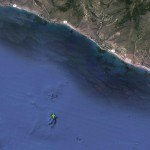 The Deep Hole/Neptune’s/County Line area is about 20 miles south of the Ventura Harbor (15 from Channel Islands Harbor) with the main dive sites ½-1 mile offshore and some deeper sites extending further out. Another name for the Deep Hole area is the “depot” because it was created using concrete rubble from an old railroad depot.
The Deep Hole/Neptune’s/County Line area is about 20 miles south of the Ventura Harbor (15 from Channel Islands Harbor) with the main dive sites ½-1 mile offshore and some deeper sites extending further out. Another name for the Deep Hole area is the “depot” because it was created using concrete rubble from an old railroad depot.
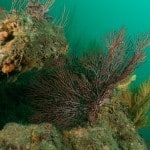 This area is large and very dramatic and is comprised of large boulders, small rock piles, rock walls, rocky reefs, and pinnacles. There are deeper sites (70′-80′) such as Sea Fans and Sweet Spot and there is a shallower (40’-60’) spot called “The Ring” with its rocky reef and kelp forest that can rival any spot on the islands on a good day along with an awesome site very close to the ring called “Towers”. The main dive area has depths ranging from 40’-100’ but there are some other unexplored areas out towards 150′ and beyond!
This area is large and very dramatic and is comprised of large boulders, small rock piles, rock walls, rocky reefs, and pinnacles. There are deeper sites (70′-80′) such as Sea Fans and Sweet Spot and there is a shallower (40’-60’) spot called “The Ring” with its rocky reef and kelp forest that can rival any spot on the islands on a good day along with an awesome site very close to the ring called “Towers”. The main dive area has depths ranging from 40’-100’ but there are some other unexplored areas out towards 150′ and beyond!
See Towers video
During the fall and winter months, the visibility can be from 20’-60’ (there are times when it reaches 80′) and in the summer when the plankton bloom it can be 10′-20′ visibility.
 The best time to dive this area is from late October to January with the best time being after the east winds blow hard because it moves the dirty top layer of water out and replaces it with cooler cleaner water. The all-time best is in the fall/winter right after a good east wind event which can give you flat calm seas, beautiful sunny skies, and some excellent underwater conditions. When you are lucky enough to hit it on one of these days you wonder why even go to the islands.
The best time to dive this area is from late October to January with the best time being after the east winds blow hard because it moves the dirty top layer of water out and replaces it with cooler cleaner water. The all-time best is in the fall/winter right after a good east wind event which can give you flat calm seas, beautiful sunny skies, and some excellent underwater conditions. When you are lucky enough to hit it on one of these days you wonder why even go to the islands.
Neptune’s
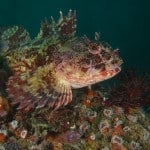 The Neptune’s area is excellent for photographers with lots of good wide-angle on one of the good visibility days and if you’re into macro you will find plenty of subjects to photograph. You would be surprised how many find this area to be a nudibranch haven. Then you have all the fish (sheepshead and lots of large barred sand bass) swimming around the rocky reefs, kelp (not as much out deeper), scallops, lobsters, and lots of invertebrates so you can see why this area can be so special and without the diving pressure the islands get. This area is more like what California diving used to be!
The Neptune’s area is excellent for photographers with lots of good wide-angle on one of the good visibility days and if you’re into macro you will find plenty of subjects to photograph. You would be surprised how many find this area to be a nudibranch haven. Then you have all the fish (sheepshead and lots of large barred sand bass) swimming around the rocky reefs, kelp (not as much out deeper), scallops, lobsters, and lots of invertebrates so you can see why this area can be so special and without the diving pressure the islands get. This area is more like what California diving used to be!
* Click here to see a multi-beam image of the Deep Hole area
*Click here to see a multi-beam image of the Ring Reef
Stair Case beach
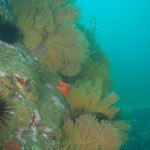 Stair Case is nestled between the condos to the east of Neptune’s Net and Leo Carrillo. There is some dramatic structure here with very large jagged rocks. The stuff closer to shore in about 20′-25′ deep doesn’t have as much life on it but still makes for a good dive. The area out deeper in 40’+ does have more life with lots of sea fans on the rocks which are typical for coastal diving and small invertebrates and little kelp. There is lobster here and like any good lobster diver, it is all about swimming and covering as much ground as possible.
Stair Case is nestled between the condos to the east of Neptune’s Net and Leo Carrillo. There is some dramatic structure here with very large jagged rocks. The stuff closer to shore in about 20′-25′ deep doesn’t have as much life on it but still makes for a good dive. The area out deeper in 40’+ does have more life with lots of sea fans on the rocks which are typical for coastal diving and small invertebrates and little kelp. There is lobster here and like any good lobster diver, it is all about swimming and covering as much ground as possible.
Harrison’s Reef
 This area is also considered part of Harrison Reef which is a large reef that runs along the County Line between Neptune’s and Leo Carrillo and it is more the shallower dive sites that run from 20′ to 60′ deep. Harrison’s is large enough that you would have to make several dives to see most of it. It is comprised of some large rock structures and most of it has quite a lot of kelp and when you have kelp in an area like this you have a healthy reef. You can get to the shallower areas of Harrison’s and Stair Case from the beach but the deeper areas are best by boat so you can avoid a cardiac arrest!
This area is also considered part of Harrison Reef which is a large reef that runs along the County Line between Neptune’s and Leo Carrillo and it is more the shallower dive sites that run from 20′ to 60′ deep. Harrison’s is large enough that you would have to make several dives to see most of it. It is comprised of some large rock structures and most of it has quite a lot of kelp and when you have kelp in an area like this you have a healthy reef. You can get to the shallower areas of Harrison’s and Stair Case from the beach but the deeper areas are best by boat so you can avoid a cardiac arrest!
*Click here to see a multi-beam image of Harrison’s Reef
LA County line to Pt. Dume
(Between 25-30 miles east of Ventura Harbor)
Outer Nicholas Canyon
We are going to skip Leo Carrillo because most of it is shallow and can be reached by the shore as a beach dive so we will move just a short distance to the east to outer Nicholas Canyon.
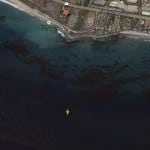 What can we say other than the outer Nicholas Canyon area is an excellent dive. This is a large reef with a shallower and deeper part of the reef. The shallower part has thick kelp and some large rocks and the outer deeper area drop’s down to a sandy bottom leading to a rock rubble field with lots of cracks and crevices. Here you can find a number of lobsters hiding out along with some large fish including sheepshead, calico, barred sand bass, and halibut. If you are into photography you will not be disappointed. Here
What can we say other than the outer Nicholas Canyon area is an excellent dive. This is a large reef with a shallower and deeper part of the reef. The shallower part has thick kelp and some large rocks and the outer deeper area drop’s down to a sandy bottom leading to a rock rubble field with lots of cracks and crevices. Here you can find a number of lobsters hiding out along with some large fish including sheepshead, calico, barred sand bass, and halibut. If you are into photography you will not be disappointed. Here 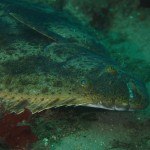 you will find some great wide-angle shots or plenty of cool macro subjects. Large dorids, fish pictures, and invertebrates are something you will see often here so don’t forget your camera!
you will find some great wide-angle shots or plenty of cool macro subjects. Large dorids, fish pictures, and invertebrates are something you will see often here so don’t forget your camera!
This area is about 3/4 to 1 mile offshore, sits in 45′-60′ of water, is a large reef, and is just under 30 miles from Ventura Harbor. It is just about straight out from the beach but way too far of a swim and you can easily get to this by kayak.
*Click here to see a multi-beam image of Outer Nicholas Canyon
Decker’s Canyon
 Decker’s is also another excellent dive and the reef is large enough to make several dives on it. This reef is more of a longer reef that runs east to west with a small wall going around part of it. The biggest part of the wall is towards the east end and runs around 55′ deep. Here you will find fish poking their heads into the crevices and this is also a good place to look for lobsters. Some of the ledges
Decker’s is also another excellent dive and the reef is large enough to make several dives on it. This reef is more of a longer reef that runs east to west with a small wall going around part of it. The biggest part of the wall is towards the east end and runs around 55′ deep. Here you will find fish poking their heads into the crevices and this is also a good place to look for lobsters. Some of the ledges 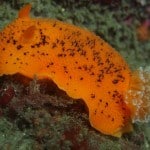 and crevices are quite big. The top of the reef is full of life with lots of sea fans, larger dorids, nudibranchs, and some other cool photo subjects.
and crevices are quite big. The top of the reef is full of life with lots of sea fans, larger dorids, nudibranchs, and some other cool photo subjects.
The reef is about 1/2 to 3/4 miles offshore, 45′-60′ deep and has some dramatic rock structure that is 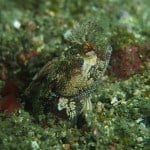 about 8′-12′ tall. Decker’s is out from El Matador and La Piedra state beaches along Hwy 1. One of the main reasons Decker’s is so nice is that the access is not the best because between the bluffs and the dirt trails and some stairs the beach isn’t all that easy to get to and then the best area is a long swim out. It is also too far for most boats to get to as it is about 34 or so miles east of Ventura Harbor.
about 8′-12′ tall. Decker’s is out from El Matador and La Piedra state beaches along Hwy 1. One of the main reasons Decker’s is so nice is that the access is not the best because between the bluffs and the dirt trails and some stairs the beach isn’t all that easy to get to and then the best area is a long swim out. It is also too far for most boats to get to as it is about 34 or so miles east of Ventura Harbor.
*Click here to see a multi-beam image of Decker Reef
See video for the Nicholas to Decker canyons areas
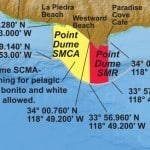 *Both Pt. Dume and Little Dume are now in Marine protected areas
*Both Pt. Dume and Little Dume are now in Marine protected areas
Pt Dume
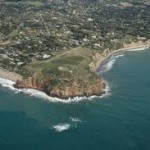 Pt Dume is now in a State Marine Reserve (SMR) but is still an awesome beach dive and can be a very rewarding dive. The main goal here is to dive the pinnacles out from the main point. There are a series of pinnacles that run from 30′-50′ deep and generally because of how far out they are the visibility can be quite good like 20′-30′ or better. There is lots of life out at the pinnacles but they are a long swim out and from Westward Beach. To make matters worse there can be a strong current and it may not come up till it is time for you to get back which can be a BIG problem.
Pt Dume is now in a State Marine Reserve (SMR) but is still an awesome beach dive and can be a very rewarding dive. The main goal here is to dive the pinnacles out from the main point. There are a series of pinnacles that run from 30′-50′ deep and generally because of how far out they are the visibility can be quite good like 20′-30′ or better. There is lots of life out at the pinnacles but they are a long swim out and from Westward Beach. To make matters worse there can be a strong current and it may not come up till it is time for you to get back which can be a BIG problem.
Little Dume-inner & outer
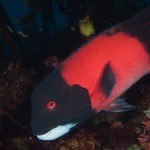 Little Dume is now in a State Marine Conservation Area (SMCA) and is around the corner from Pt. Dume going towards Paradise Cove. Access here is either a hike or done by kayak making it very seldom dived. This area is more like a reef with kelp and some excellent structure with shallower depths. This area is quite large and well worth the effort to get to.
Little Dume is now in a State Marine Conservation Area (SMCA) and is around the corner from Pt. Dume going towards Paradise Cove. Access here is either a hike or done by kayak making it very seldom dived. This area is more like a reef with kelp and some excellent structure with shallower depths. This area is quite large and well worth the effort to get to.
The outer areas of Little Dume which are way too far to swim to or even kayak to for most people are the best and if you are careful they are areas here outside of the SMR & SMCA areas. These outer areas have some excellent structures such as large mounds of rocks and some small ledges with lots of kelp and depths of 35′-50′ deep. The outer reef is large and has some excellent hunting along with some great photo subjects.
Pt. Dume to Big Rock, Malibu
(Between 30-40 miles east of Ventura Harbor)
Latigo Cyn
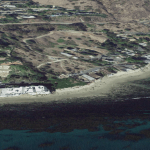 Latigo is another awesome dive and not far out in front of some nice expensive homes. This area is just west of Solstice Canyon and can be a bit of a swim but with a kayak or boat, anything is possible. The main reef here is out from the point and is quite large with lots of kelp and some excellent structure. The reef structure isn’t all that tall but there is lots of it with sand areas between. Lots of fish here and plenty of places for the lobsters to hide but the good thing is most of the holes aren’t all that big. The depths here can be 25′-40′ depending on how far out you go and visibility can be crappy to 50’+
Latigo is another awesome dive and not far out in front of some nice expensive homes. This area is just west of Solstice Canyon and can be a bit of a swim but with a kayak or boat, anything is possible. The main reef here is out from the point and is quite large with lots of kelp and some excellent structure. The reef structure isn’t all that tall but there is lots of it with sand areas between. Lots of fish here and plenty of places for the lobsters to hide but the good thing is most of the holes aren’t all that big. The depths here can be 25′-40′ depending on how far out you go and visibility can be crappy to 50’+
Malibu Pt/Broad Beach area
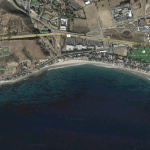 This area is from the Malibu Bluffs to Malibu Pt. which is near the Malibu Lagoon area. There are lots of places to dive here but the access is very limited and the residents try to make it even harder. The reefs here are smaller spot reefs with clean white sand between them and lots of kelp growing from each reef. Some of the shallower ones in 20′ of water are some of the biggest with the reefs getting smaller the deeper you go. At depths of 25′-30,’ it gets hard to find any reefs worth diving on so the best here is to stay shallow.
This area is from the Malibu Bluffs to Malibu Pt. which is near the Malibu Lagoon area. There are lots of places to dive here but the access is very limited and the residents try to make it even harder. The reefs here are smaller spot reefs with clean white sand between them and lots of kelp growing from each reef. Some of the shallower ones in 20′ of water are some of the biggest with the reefs getting smaller the deeper you go. At depths of 25′-30,’ it gets hard to find any reefs worth diving on so the best here is to stay shallow.
Big Rock
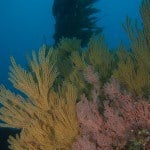 Big Rock is another fun dive and accessible by the beach but the parking is very limited. Here there is a reef with large rocks that run straight out from the point. The rocks are very big creating lots of crevices and mini walls covered with sea fans. There is kelp growing from the rocks and the reef is healthy with lots of horn sharks, some lobsters, scallops, and fish. The only problem with Big Rock is it is a smaller reef but one not to miss.
Big Rock is another fun dive and accessible by the beach but the parking is very limited. Here there is a reef with large rocks that run straight out from the point. The rocks are very big creating lots of crevices and mini walls covered with sea fans. There is kelp growing from the rocks and the reef is healthy with lots of horn sharks, some lobsters, scallops, and fish. The only problem with Big Rock is it is a smaller reef but one not to miss.